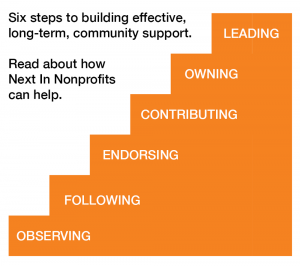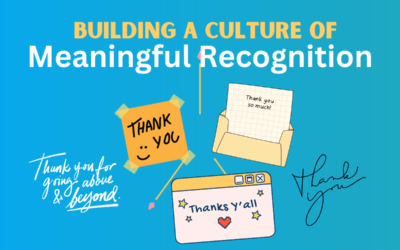 The engagement ladder is not a new concept in understanding how charities gain the support – both financial and otherwise – they need to see real mission outcomes in the world. It is a great structure to think both the near- and long-term. There are new, and better, tools in place to support each step forward for nonprofit growth.
The engagement ladder is not a new concept in understanding how charities gain the support – both financial and otherwise – they need to see real mission outcomes in the world. It is a great structure to think both the near- and long-term. There are new, and better, tools in place to support each step forward for nonprofit growth.
Observing. Getting introduced to potential new supporters is harder than ever. More charities, more Facebook pages, more podcasts… more everything. Getting found means careful search engine strategy, select paid promotions, using the right social networks for the right audiences, and more. Cutting through the clutter can be done, but just hoping users discover a nonprofit in the yellow pages won’t work.
Following. Once a supporter has found a charity (or vice-versa), they must be valuable enough to find some way to stay connected. There is simply too much competition for attention to assume that if a supporter observes a nonprofit once, they will come back. They must find enough shared value to follow they work and learn more. Email newsletters, social channels, web-based seminars and more are just some ways to engage observers and move them up the ladder.
Endorsing. The follower who now sees more communication from a charity should find enough value in that work to want to share it. A community member who shares that status update or forwards an email is much more valuable than one who reads it and just moves on. These people are committed to the mission, and ready for the next step up. Tools in 2016 can discover how these endorsements happen, and learn from that success.
Contributing. Many nonprofits look at getting a new donor as the end of a process. While it is a very important step up, it is also a qualifier of sorts for who may be ready to start leveraging their own networks to bring new people in to the base of the engagement ladder. A friend who asks a friend to become involved is much more likely to start a conversation than an unknown charity sending a bulk solicitation.
Owning. Some donors just make a small contribution and move on. There is nothing wrong with that, but others can be encouraged to move up the ladder further still. A donor who views the organization as their “go-to” nonprofit for that work is more likely to become a volunteer, and more likely still to bring their own ideas and friends to the table. Smart charities will use self-reporting tools and surveys to find those Owners and move them up one more step.
Leading. Every nonprofit needs strong leadership to grow resources and mission impact. Yes, it’s possible to recruit board members using traditional tactics, but helping leadership evolve up the engagement ladder brings authentic, committed, effective people to the top posts in a charity. Many nonprofit boards struggle with getting a quorum or having good board involvement in programming. Bringing leaders up through each stage of engagement ensures they are there for the right reasons.
Contact us to learn more about which tools are best for a given nonprofit, audience and mission.
